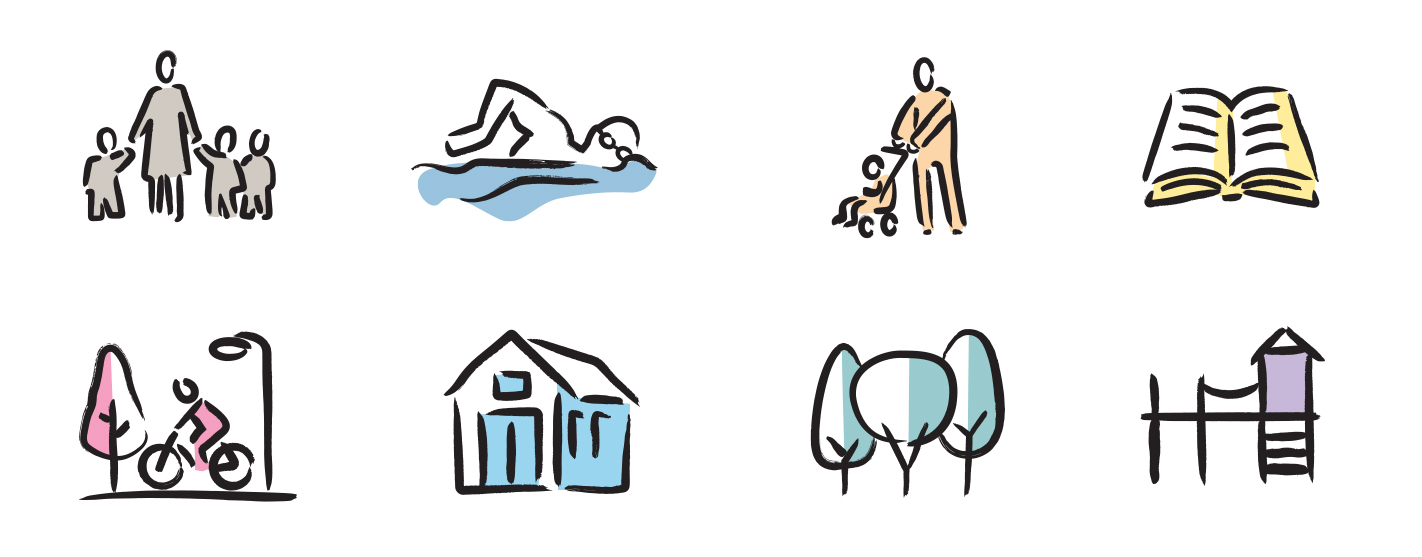Pictograms, icons and symbols and have been part of culture for thousands of years. They have allowed us to transcend the limits of language and are a feature of public spaces across the world; quietly instructing, explaining, warning us. In business communications, pictograms still excel as a visual device to improve recall and stand out from the crowd.
My earliest memory of pictograms (and a big influence on my career) is from the 1980 Moscow Olympic Games. I loved how these simple little characters could convey the dynamism of each sport and the collective diversity of the event.
Now, as a graphic designer I often get the chance to create suites of pictograms for our clients. I enjoy the challenge of developing a solution that communicates clearly (with pictograms this means that the viewer grasps each concept quickly and perceives a stylistic unity across the set). How much detail to include; which style to choose; whether to show the thing or allude to the thing – it’s as much art as science, but the science comes from knowing how to apply what’s been proven to work.
Choosing stock or creating original designs
Although online stock libraries offer plenty of readymade pictograms, we find that often the best way to achieve the desired outcome is to create an original design. Our clients usually have very specific information to convey and stories to tell that require tailored design, as was the case in the pictograms we created for Victoria’s Independent Broad-based Anti-corruption Commission below.

When developing a set of pictograms it’s important to consider use and audience first. Do they need to work without words, be culturally sensitive or simply accompany words as a support graphic? Are they part of a creative campaign, used within an app interface or within an internal strategy? What are the reproduction restrictions? Will they appear as small buttons in a menu or be carved into a large block of wood in a park? Knowing this at the beginning will help determine the most appropriate approach.
Picture this
To ensure a pictogram or icon is understandable, we research the subject and see if commonly accepted visual representations exist; a magnifying glass for searching or a light bulb for ideas are time-tested examples. Or we may need to develop a new concept and imagery.
When developing pictograms for the Mitchell Institute’s Health Tracker material we needed to convey a variety of health issues from relatively easy to visually represent topics like smoking, drinking and blood pressure to more complex ones such as spinal injuries, cancer and mental health.
One of the family
Not only does an individual pictogram need to convey it’s meaning clearly, it should appear consistent and harmonise with others in the set to create a compelling visual story. Like a large company with a familial collection of brands, consistency helps communicate, reinforce corporate branding and confer a level of professionalism.
There are also practical considerations – designs with varying levels of detail may not reproduce equally at different scales or in different media.
Visual style
The choice of linework, colour and form make up a pictogram’s personality and this affects how the images will be interpreted.
Geometric linework is a popular traditional approach, but pictograms needn’t forsake friendliness in the search for minimal perfection. Rounded edges, brushstrokes and a host of other forms can be used to project a more friendly tone, as can be seen in our work for Yarra Ranges Council.

Whatever the approach, it’s important to strive for an aesthetically attractive, appropriate and unique solution.
I love the opportunity to design logos and the great thing about a pictogram project is I get to design a whole set of them.
By Aaron Williams